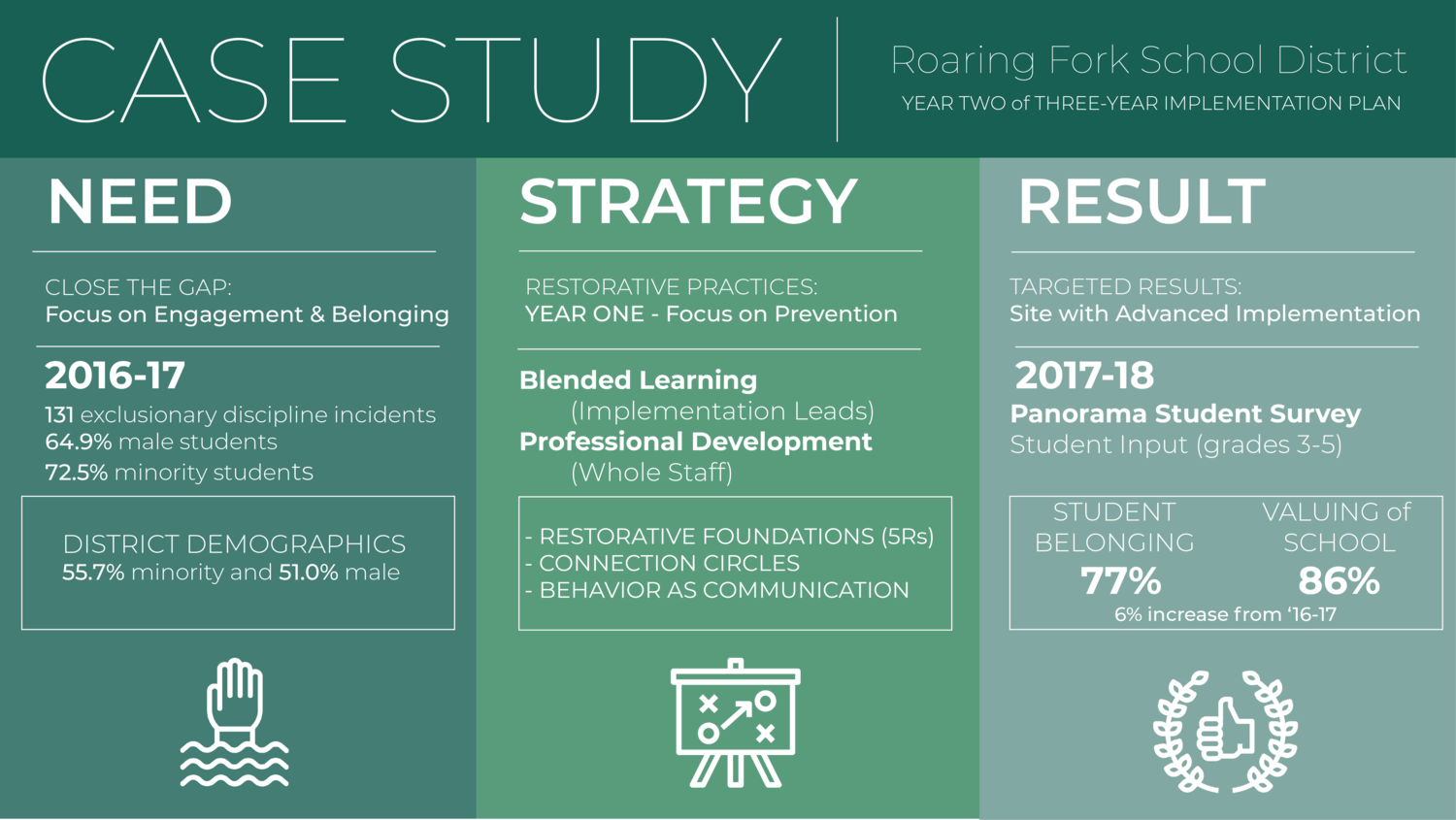What is “Restorative Justice”? According to the Office of the State Superintendent of Education, “Restorative Justice is a culture and set of practices that engage a community in building relationships and repairing harm through mutual, inclusive dialogue, understanding, and cooperation. A whole-school approach to Restorative Justice is more than a set of interventions aimed at students, but rather a way of being that touches all members of the school community and their relationships with each other.”

Source: ReSolutionaries, Inc.
Suspension Doesn’t Work
Educators have become increasingly aware that punishments such as detention and suspension only aggravate issues like bullying, violence, poor academic performance, and parental apathy. This awareness has prompted the exploration and powerful research of restorative practices to create safe, supportive learning environments.
Researchers have discovered that restorative practices work for students and educators. It’s a win-win!
No More Suspensions—Ever?
Adopting restorative practices doesn’t mean no more suspensions, ever. Even Denver Public Schools’, Dora Moore, North, and Skinner Middle School students still get suspended for serious offenses. But suspensions have decreased as the petty disrespect that escalates into red-faced standoffs, or the squabbles that explode into violence, are often avoided or headed off by restorative practices.
Unfortunately, it has become clear that traditional punishments don’t work to change the root cause of misbehavior or to keep students on a path to college and careers.
“Kick ‘Em Out!”
“When I got here, the culture was to suspend and ‘kick ‘em out of my room,’” says Dora Moore principal, Karen Barker, who had started at Dora Moore five years previously. But she wondered what kids learned from that.
Transforming School Climate
“Responsive Restorative Justice in Education (RJE) practices build responsibility, promote social-emotional growth, and support positive behaviors in schools,” Gregory and Evans write. “However, if an RJE effort does not also address the need for preventative practices to transform school climate, the singular emphasis on behavior management may distort the initiative and preclude the opportunity to promote interconnectedness and well-being.” RJE practices work, but they can work better.
The 5 R’s of Restorative Justice Practices
The following are the five Rs of Restorative Justice Practices:
- Relationship
- Respect
- Responsibility
- Repair
- Reintegration
RJP—A Proven Method
Restorative Justice Practices (RJP) are a proven method to create equity. Many studies illustrate that RJP reduces the damaging effects of implicit bias that have contributed to the disproportionate number of BIPOC and SPED students’ experience of exclusionary and punitive discipline. This disproportionality contributes to the role the juvenile justice system plays in the school-to-prison pipeline, which further contributes to the inequities in the adult criminal justice system.
- RJP are about creating responsibility-based consequences that seek to repair harm.
- RJP teaches life and character-building skills.
- RJP are a way of doing business, used as a way to practice social/emotional relationship and conflict resolution skills.
Ask These Restorative Questions
When responding to challenging behaviors:
- What happened?
- What were you thinking of at the time?
- What have you thought about since?
- Who has been affected by what you have done?
- In what way?
- What do you think you can do to make it right?
When someone has been harmed:
- What did you think when you realized what had happened?
- What impact has this incident had on you and others?
- What has been the hardest thing for you?
- What do you think needs to happen to make it right?
O’Connell, T. (2009). The Origins of Restorative Conferencing. Journal for Peace and Justice Studies, 18, 87-94.

